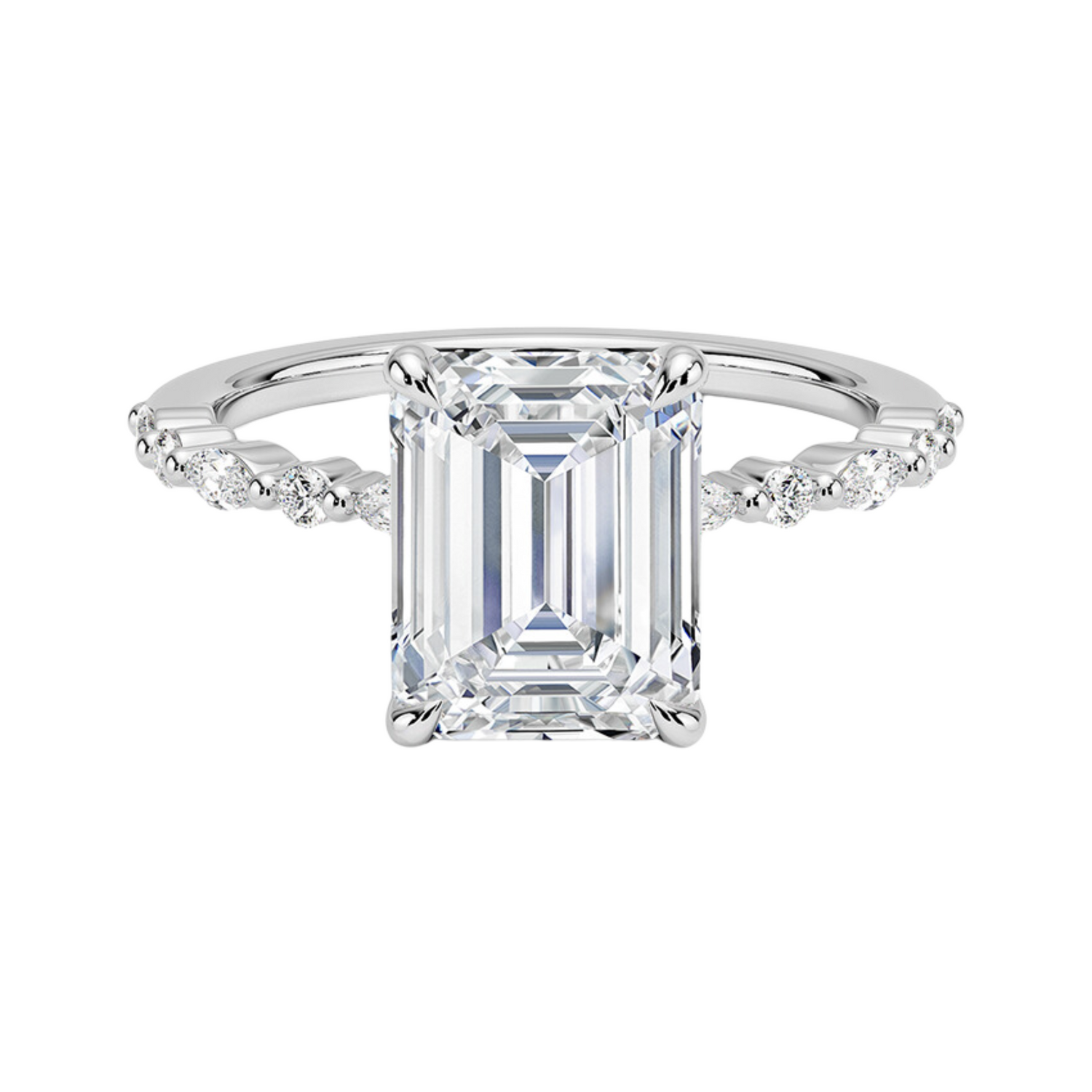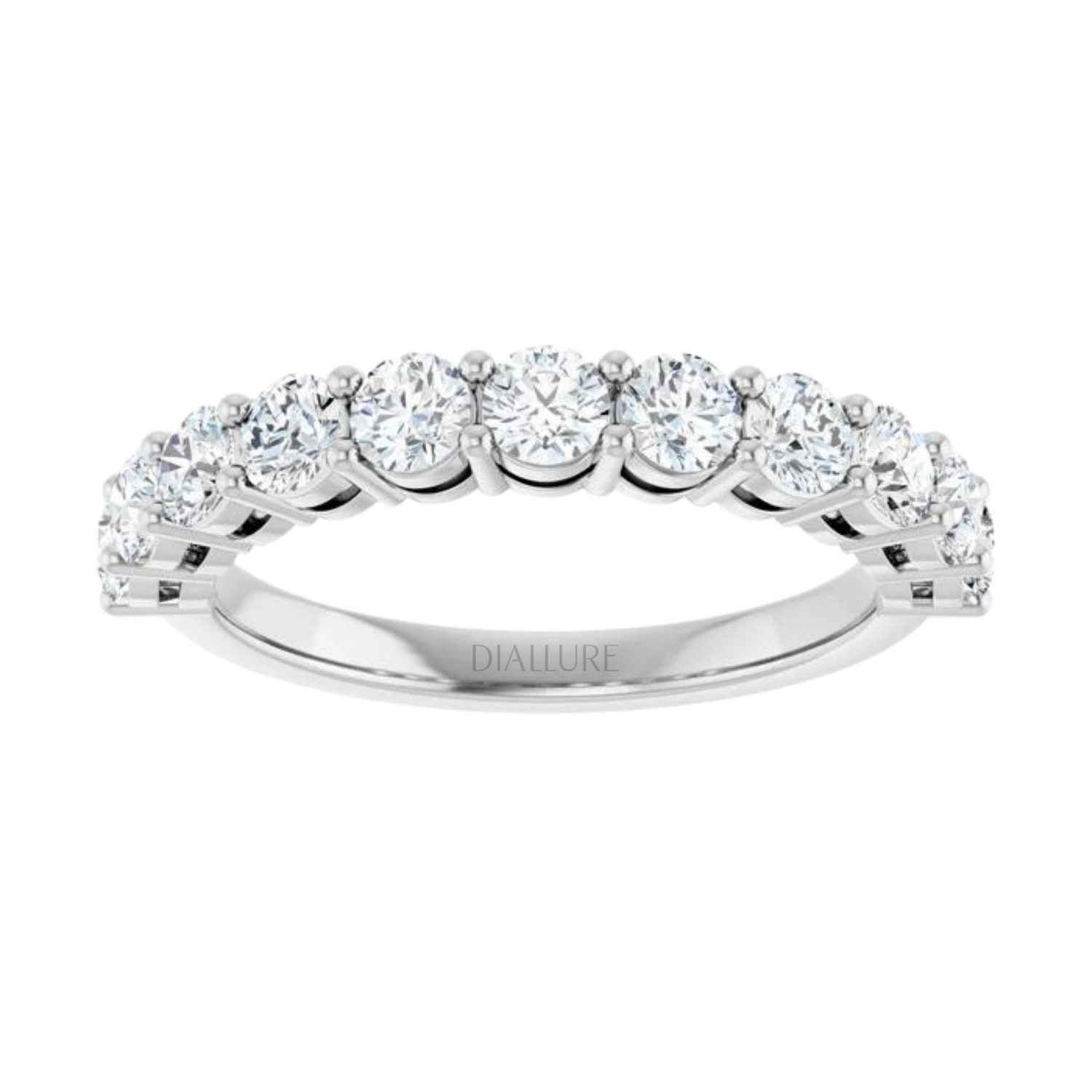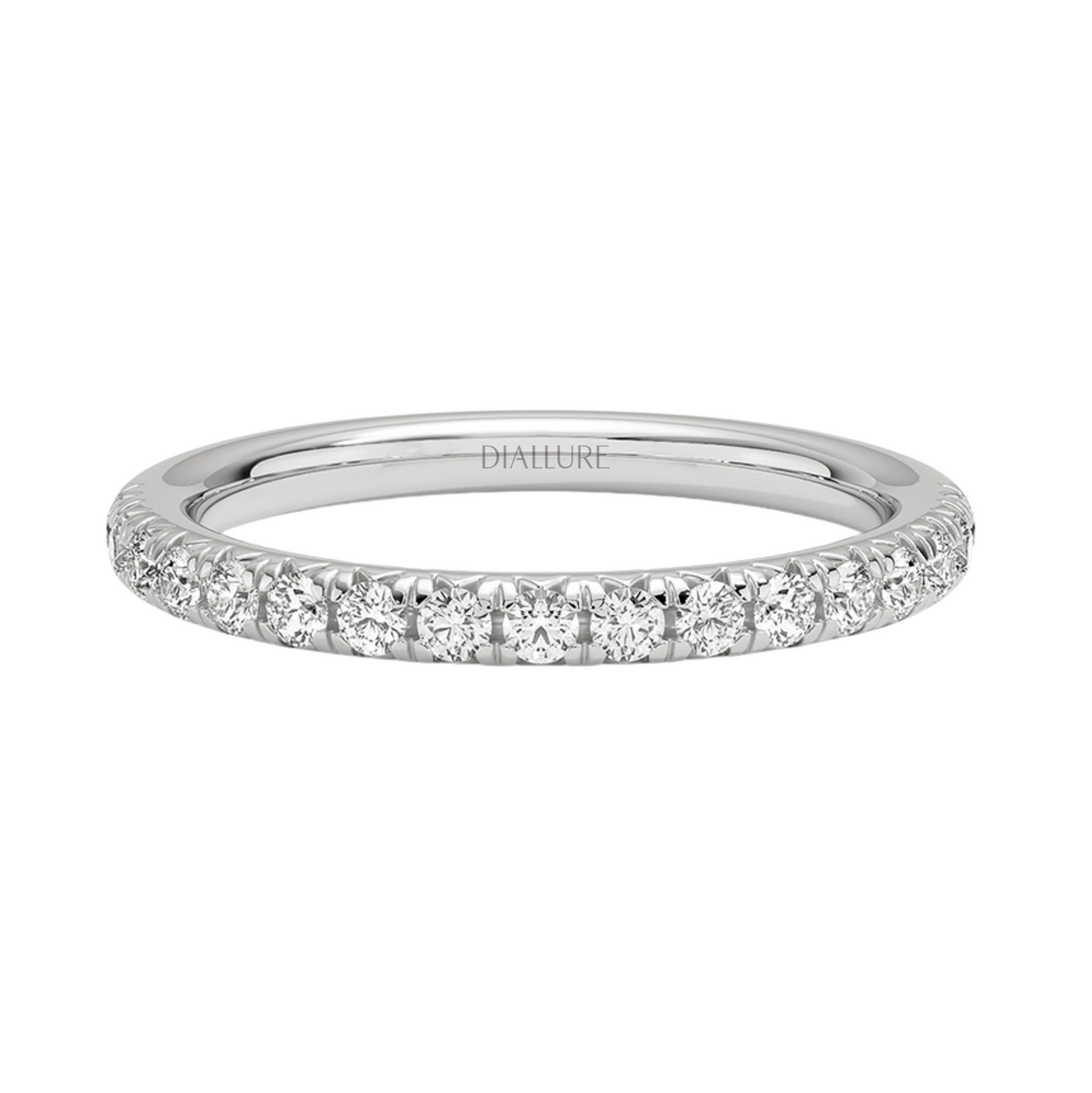An engagement ring is an important item that you will only own once in your lifetime. The material you choose not only affects the ring's appearance and durability , but also your budget and individual lifestyle . Understanding the differences between the popular materials "platinum," "gold," and "white gold" is essential to choosing your ideal engagement ring. In this article, we'll thoroughly explain the characteristics and differences between platinum, gold, and white gold to help you determine which material is right for you.
table of contents
1. Platinum: The ultimate material with eternal brilliance and strength
1.1 Platinum Benefits
1.1.1 Durability
Platinum is a very strong metal that is scratch-resistant and tarnish-resistant . Therefore, as an engagement ring, it is easy to maintain its beauty for a long time . The good thing about platinum is that it does not lose its shine over the years, and you can enjoy the natural changes that occur over time.
1.1.2 Allergy-friendly
Platinum is less likely to cause allergic reactions than other metals, so it can be worn safely by people with sensitive skin. Platinum is often made with a purity of 90% or more (PT900 or PT950) , so it is recommended for those who are concerned about metal allergies.
1.1.3 Premium feel
Platinum is often chosen as something "special" due to its beautiful shine, weight, and expensive image . Choosing platinum for your engagement ring will undoubtedly create a lifelong keepsake that will symbolize your engagement.
1.2 Disadvantages of Platinum
Platinum is very expensive , and its price tends to be much higher than other metals. Because it is rare and requires time and effort to process, it is recommended for those with a larger budget.
2. Gold: A warm and traditional choice
2.1 Types of gold and their benefits
Gold is the metal that has been used for the longest time in engagement rings. With its beautiful color and rich history, gold has been loved throughout the ages. The appeal of gold lies in its variety of colors and its highly decorative qualities .
2.1.1 Rich colors
Gold comes in a variety of colors, including yellow gold , rose gold (pink gold) , and white gold . Yellow gold, in particular, offers a warm, classic look, making it ideal for traditional engagement rings. Pink gold offers a soft, feminine look, making it ideal for elegant, romantic designs. White gold is popular with those who prefer a simple, contemporary style.
2.1.2 Price variations
Gold is relatively more affordable than platinum, so there are more options to choose from depending on your budget. Prices vary depending on the purity of the gold and the design , so it's easy to choose an engagement ring that fits your budget.
2.1.3 Ease of processing
Gold is a relatively soft metal, making it easy to apply intricate designs and decorations . Gold is a good choice if you want detailed engravings or intricate designs.
2.2 Disadvantages of Gold
2.2.1 Softness
Gold is a relatively soft metal and is prone to scratches . Daily use can cause scratches on the surface, so you need to be mindful of maintenance .
2.2.2 Allergy risk
Gold is often alloyed with other metals, which can cause allergic reactions, especially those containing nickel , so it's important to pay attention to the purity of the gold .
3. White Gold: Beautiful and affordable, similar to platinum
3.1 Advantages of White Gold
3.1.1 Platinum-like appearance
White gold is a metal that has a white luster similar to platinum, achieved by coating yellow gold with rhodium . It is the perfect material for those who want the luxury of platinum but want to keep the price down.
3.1.2 Good cost performance
White gold is more affordable than platinum and offers a great balance of price and quality. It is a popular alternative to platinum, allowing you to have a beautiful engagement ring on a budget.
3.1.3 Ease of processing
White gold is softer than platinum and is easier to work with , which is why one of its charms is the freedom to arrange the design.
3.2 Disadvantages of White Gold
3.2.1 Rhodium Coating Maintenance
White gold is plated with rhodium, which can wear off over time, revealing the original yellow color, so regular maintenance is required .
3.2.2 Allergy risk
White gold usually contains nickel, which can cause allergic reactions. If you have allergies, we recommend choosing nickel-free white gold .
4. Key points for selecting materials and recommended options

When choosing materials, consider the following points:
- Lifestyle : If you plan to wear your ring every day, durable options like platinum or white gold are a good choice.
- Budget : If cost is a concern, gold or white gold are good choices.
- Look preference : For pure white sparkle, choose platinum; for warmer hues, choose yellow or rose gold.
Comparison table for each material
|
material |
Color |
durability |
Price range |
Feeling of weight |
maintenance |
|
platinum |
pure white |
Very high |
expensive |
heavy |
Hardly needed |
|
Yellow gold |
golden color |
moderate |
Reasonable |
moderate |
Sometimes necessary |
|
Pink Gold |
Pinkish gold |
moderate |
Reasonable |
moderate |
Sometimes necessary |
|
White gold |
silvery white |
Medium to high |
Reasonable to medium |
moderate |
Plating needs to be reprocessed |
5. Summary
- Platinum : For those looking for luxury and durability.
- Gold : For those who want to express their individuality through color and design.
- White gold : For those who want a look similar to platinum but want to keep costs down.
Each material has its own characteristics, so you can choose according to your preference. Take your time to think about which material is best for you. An engagement ring is an important purchase that you will only make once in your lifetime, so make sure you make a satisfactory choice and create wonderful memories.
*Note: Due to the recent rise in the price of palladium, the material used in white gold, DIALLURE has set the same price for each material as of December 2024.





